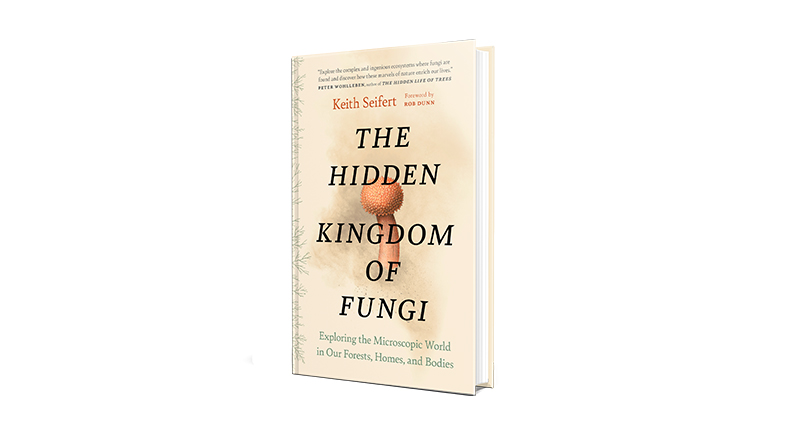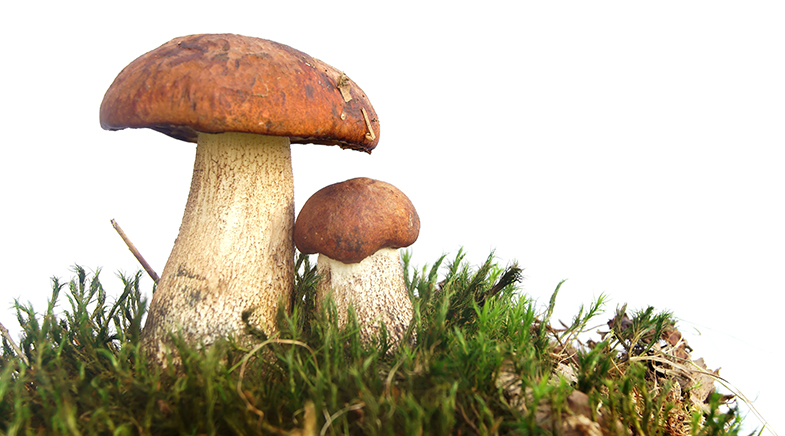Break the mould
-
- from Shaastra :: vol 01 issue 05 :: Sep - Oct 2022

Mycologist Keith Seifert offers readers a personalised account of his exploratory journey through the labyrinths of the fungal kingdom.
Fungi are perhaps the most numerous and widely distributed of all living organisms — present in the air, in soil, and within and outside our bodies.
They come in diverse forms and sizes; some are free-living, but most exist in symbiotic relationships, ranging from mutualism, when the organisms involved benefit mutually, to parasitism, when an organism thrives at the expense of another. The free-living forms are generally saprophytic, thriving on dead and decaying tissues.Most of them are microscopic, largely existing as a network of an almost invisible thread called hyphae. Occasionally, some form larger, visible structures and emerge as mushrooms or puffballs that spew clouds of microscopic spores, which aid in their propagation.
Saprophytic fungi play a vital role in recycling dead organic matter into elements that can support further cycles of life. Several fungal species serve beneficial purposes; yeasts, for instance, have been used since time immemorial to ferment raw materials to produce wine or bread.

In The Hidden Kingdom of Fungi, Keith Seifert, a mycologist at Carleton University, Canada, familiarises us with the various fungal forms and takes us through the labyrinth of their lives in a personalised account of his exploratory journey into the fungal kingdom. His minimal use of scientific jargon, his invocation of everyday examples to describe complex concepts, and the liberal sprinkling of little-known facts make the book an easy read.
It reminds us that several species of moulds are the source of important antibiotics such as penicillin. Many types of mushrooms can be directly consumed as protein-rich food; some — truffles and shitake, for instance — are highly valued for their flavouring and medicinal properties.
Fungi species can be quite harmful as well. As crop pathogens, they can cause extensive damage to agriculture production. The Irish famine in the first half of the 19th century was a result of the potato blight disease caused by a plant-pathogenic fungus. Many fungal species are responsible for the spoilage of food and food poisoning. Aflatoxin, produced by the fungus Aspergillus flavus, colonises grains, legumes and protein-rich nuts, causing severe liver damage. Existing and emerging fungal diseases of crops are a serious challenge to meeting the needs of a growing global population.
Life on our planet is crucially dependent on the diverse functions that fungal organisms play, either by themselves or in association with other life forms. A better understanding of these organisms and a deeper appreciation of their roles in our daily life and our environment will help us build sustainable options for our and our planet’s future. This goal is eminently served by the book.
Life is crucially dependent on the many functions that fungal organisms play, either by themselves or with other life forms.
It is not an intimidating academic tome, but is designed to appeal to the layperson with a curious mind. The book’s nine chapters are divided into three parts. After a brief introduction that helps us to understand the place of fungi in the context of all life on our planet, the first part — The Hidden Kingdom — takes us through fungal diversity and relationships with other life forms.
The next section is a fascinating exposition of how fungi have been involved in many human endeavours, from prehistoric times to the present and from farming to conditioning human health and the environment.
We do not often think of fungal species as an integral presence along with other microbes in our own bodies. Each of these fungal species can be incidental, beneficial or detrimental to our health and well-being; these roles are often interchangeable depending on the physiological condition of the host and other environmental factors. For example, several fungal species are harmless co-passengers on or in the human body; however, in an immune-compromised situation (as in an HIV infection), these can turn fatal.
The third and final part is a visualisation of how an understanding and responsible utilisation of these organisms can impact human life and contribute to a sustainable planet. The author has ventured to fantasise a bit, but not entirely without the support of established scientific facts and logic. The appendix on fungal classification and the extensive literature cited at the end will help readers who are persuaded to dive into a deeper study of these fascinating organisms.
Academician-turned-entrepreneur Dr K. K. Narayanan is Founder-Director of Sthayika Seeds, which works on research, development and sales of improved varieties of seeds.
Have a
story idea?
Tell us.
Do you have a recent research paper or an idea for a science/technology-themed article that you'd like to tell us about?
GET IN TOUCH














